Intel Xdk App Designer Missing
Mobile app development no longer requires you to learn complex programming languages. Knowledge of web-based languages like HTML, CSS, and JavaScript is enough to build awesome-looking high performing native applications.
If you are running on limited resources and time, there are some great cross-platform app development frameworks available that can help you build cross-platform mobile apps using a single codebase. Being a leading mobile app development company, we have collected and listed the top ten mobile app development frameworks of 2021.
Contents
- React Native
- Ionic Framework
- Flutter
- Xamarin
- PhoneGap
- Intel XDK
- Corona
- Appcelerator
- NativeScript
- Mobile Angular UI
- FAQs
- How much it costs to build an app?
- How much time does it take to build an app?
- Which are the best mobile app development frameworks?
- Wrapping Up
-
React Native
React Native Intro
React Native is one of the most popular mobile app and best framework for web development. The JavaScript framework is used for cross-platform app development. It's open source and allows you to build apps for Android and iOS platforms simultaneously.
React Native is developed by Facebook and gaining a lot of traction in recent years. This is the best framework for mobile app development that significantly reduces the mobile application development time and helps you build reliable, powerful, and quality applications in less time.
Moreover, as you can use the same code base for both Android and iOS, React Native helps save a lot of resources which can be further used in the promotion and up-gradation of the applications.
React Native Features
- Cross Platform App Development: React Native was initially available for iOS platform only. However, due to its great performance, now, it supports both platforms. In this mobile app development framework, instead of using Swift, Kotlin, or Java, you will be putting those building blocks together using JavaScript and React. Hence, it allows the developers to build apps for Android and iOS platforms simultaneously. This reduces the mobile app development cost to a greater extent.
- Reusable Components:React Native allows the developers to reuse the components. Using it one they directly compile the blocks with the native app. Both Android and iOS are having their counterparts in React, which delivers fast and consistent results across all the platforms.
- Ease of Maintenance: When it comes to maintenance of React Native projects, there's nothing difficult or to be worried about. As React Native requires you to only maintain a single code base for both the platform, companies can assign a single team for both versions of apps.
Furthermore, it uses heavy javascript which makes moving from one project to another quite simpler for developers. You can even use the Live Reload feature to verify the effect of codes instantly.
Here're the examples of apps built with one of the best mobile app development frameworks, React Native:
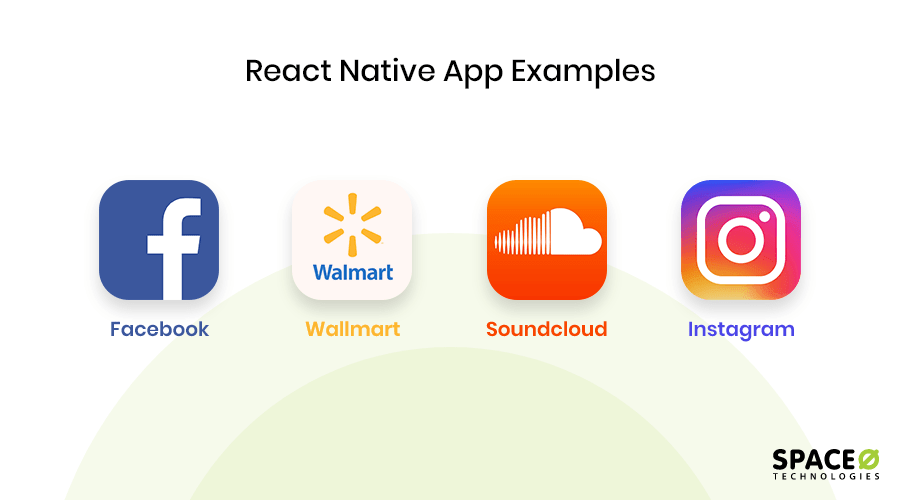
-
Ionic Framework
Ionic Intro
Ionic is another popular open-source framework for developing cross-platform mobile applications using web technologies like HTML, CSS and JavaScript. This is the best mobile app development framework that has always shown great results.
Talking about the latest version, it's using minimal DOM for better performance efficiency. It provides mobile optimised components as well as native APIs using Cordova and Ionic Native. It has its own command line interface tool which makes mobile app development quite easier and faster.
Ionic Features
- Platform Independent Framework: Ionic is capable of recognizing the platform-specific advanced CSS that is proportional to the native look and feel on different mobile operating systems. It reduces the code changing requirements and it gives the codes of mobile-optimized HTML, JS, and CSS components. Apart from this, it incorporates into AngularJS and provides a robust structure with a more manageable code.
- Cross Platform Mobile App Development: Ionic takes less time, resources and efforts to build an application for multiple mobile platforms simultaneously. It helps deploys standard tools with a solitary code base.
- Based on AngularJS: It's is the best framework for mobile apps and web applications. The Ionic framework utilizes AngularJS to offer a bunch of center functionalities to the designer. They can easily incorporate alluring components into the application.
- Utilizes Cordova Plugins: Plugins play an important role in Ionic mobile app development. Ionic framework application development utilizes Cordova plugins and helps developers accessing different components of the framework such as camera, GPS, etc easily.
Here are the top Ionic app examples:
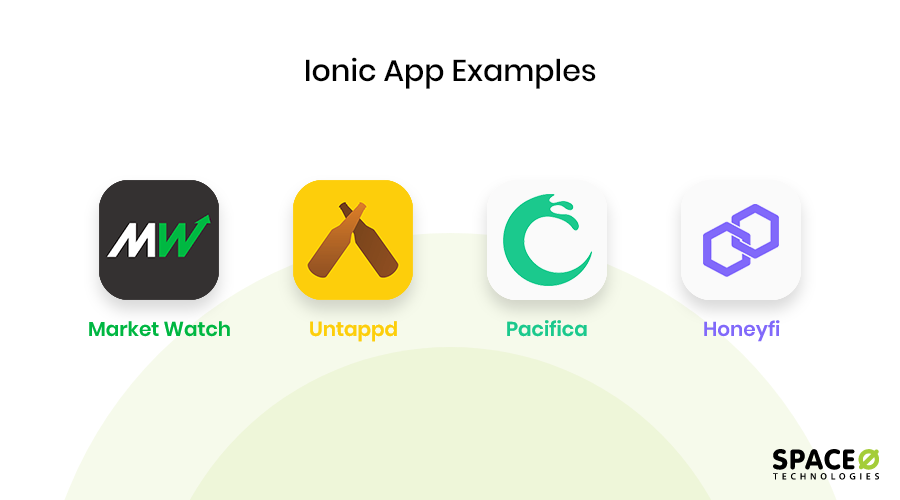
-
Flutter
Flutter Intro
Flutter is the portable user interface framework and one of the most popular mobile app development frameworks that used for building beautiful, natively-compiled applications for mobile, desktop and web. It's developed by the search giant Google who allows you to target a wide range of users with a single code base.
As it's yet to become popular in the market, the community support is less but more and more people have started using it in recent times. It's free, open-source, and backed by Google. So, I don't think there's any reason to not try it out.
We have also created an android tutorial using flutter animation that you can refer here,
- How to Create Registration Screen for Password Verification in Android Using Flutter Animation?
Flutter Features
- Native Performance: Flutter strives to provide full native performance by incorporating all critical platform challenges such as scrolling, navigation, icons and fonts as widgets.
- Fast Development: Flutter comes with Stateful Hot Reload feature that makes mobile app development really fast. You don't need to build everything from scratch. It has a rich set of fully-customizable widgets to create native interfaces in very less time.
- Expressive and Flexible UI: Flutter is already popular for making mobile app development fast. It allows you to add features focusing on the native end-user experiences. The layered architecture allows you to customize the application in almost every possible ways which further speed ups the rendering and result in results in expressive and flexible designs.
Check out top mobile applications that are developed on the Flutter framework:
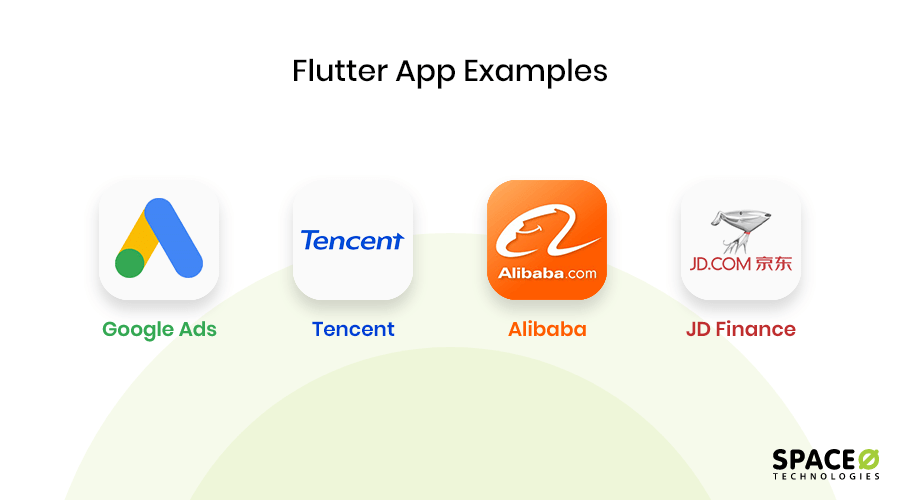
-
Xamarin
Xamarin Intro
Xamarin is also among the popular open source names for developing cross-platform mobile applications. It was founded in 2011 and acquired by Microsoft in 2016 with an aim to make mobile app development simpler and easier. It comes with almost all the essential tools required to build apps with native features.
Just like other mobile app development frameworks, the application shares the common codebase and thus reduces the development time and cost.
Xamarin is available to download with Visual Studio. A large amount of code is already written in C#. Hence, there's no need to learn Java, Objective-C, or Swift to build apps.
If you already know C#, then going with Xamarin will help you make apps for more than one platforms in no time.
Xamarin Features
- Native User Interfaces: Xamarin is equipped with native user interface controls. Apps built on this platform look standard and behaves just like other apps built on other platforms.
- Native API Access: Xamarin allows apps to have access to all the functionality available in the underlying platform and device. This also includes platform-specific features like ARKit and Android Multi-Window mode.
- Native Performance: Hardware acceleration is like a magic which helps your application to come out from critical situations. As the apps are compiled for native performance, they can easily leverage platform-specific hardware acceleration.
- Target All Platforms: Xamarin allows you to use a single codebase for Android, iOS and Windows. You can use the same language, data structures, API for more than 75% parts of your app code. This helps a lot in the maintenance of the code.
Here're the examples of top mobile apps built with Xamarin framework:
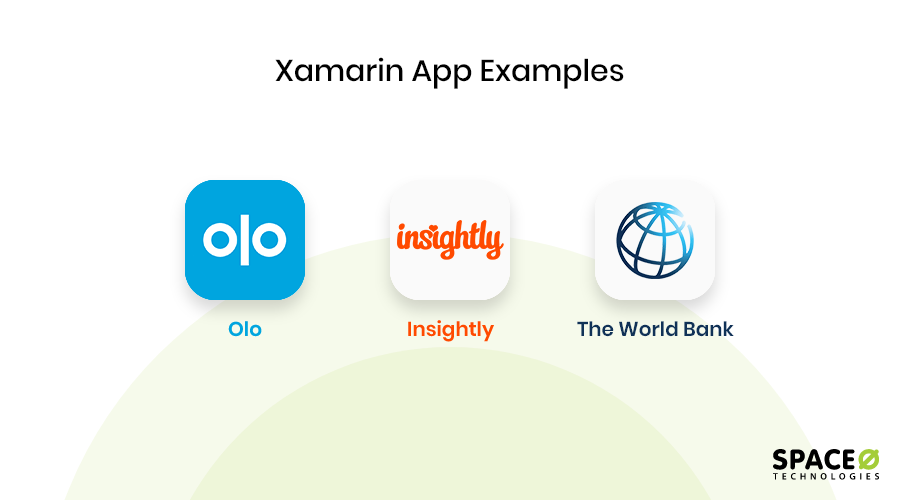
-
PhoneGap
PhoneGap Intro
PhoneGap is an open source cross-platform mobile app development framework that eradicates the use of complex languages such as Java for Android and Swift for iOS. It allows you to develop hybrid applications targeting all the devices by using web-based languages such as HTML5, CSS3 and JavaScript.
PhoneGap was initially launched as 'Apache Cordova' introduced by Nitobi. But later Adobe purchased Nitobi and renamed Apache Cordova as 'PhoneGap'.
This is the best mobile app framework that strives to bridge the gap between hybrid and native apps of mobile devices. PhoneGap wraps up the progressive web apps with native mobile applications and enhances their functionality.
The final application is wrapped within a platform native 'WebView' browser object, and ultimately becomes a stand-alone application.
PhoneGap Features
- Cross-Platform Compatibility: PhoneGap is compatible with all the popular mobile application platforms such as Android, iOS, etc. It just requires you to write the code once and it will run on various platforms seamlessly.
- Flexibility with Web Technologies: As the apps are built using CSS, HTML, and JavaScript, you won't have to learn new programming languages to develop mobile applications. This is one of the mobile app development frameworks that has been available for a long time now and so you'll find many libraries to make your work super easy.
- Robust Support: PhoneGap has a robust support system. They provide beginners guide for freshers to understand the project easily. Its mobile app development community is also one of the largest and most active communities in the world. You'll see a lot of examples to clarify your understanding. If you are trying something new, then this feature helps a lot in speeding up the process and reduces your efforts.
Here are the top PhoneGap app examples:
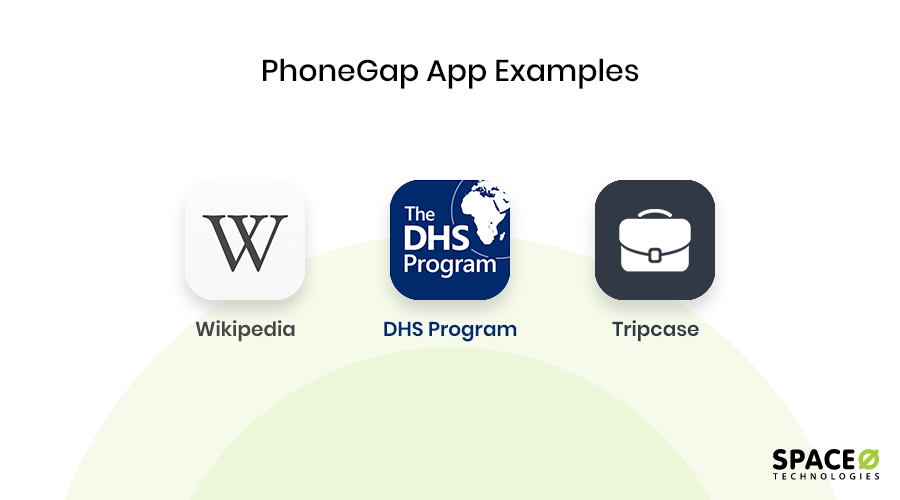
-
Intel XDK
Intel XDK Intro
The Intel XDK is a complete cross-platform development environment for hybrid mobile apps and web apps development. The main highlight of this environment is it enables the developer to cost-effectively create, test, debug, build and deploy HTML5-based hybrid apps at a very less cost.
Apps were created using the IDE then exported to Adobe PhoneGap for compilation into a native code app. Targeting different platforms using the same code is not difficult but it's not recommended to use Intel XDK for heavy feature-rich applications.
Furthermore, It also supports the developing future-oriented Internet of Things and NodeJS apps that uses Intel maker board.
Intel XDK Features
- Code Assistance: Intel XDK is well versed with all the features that make a developer's life easy. The code hinting and automatic code completion help in speeding up the development. Here, the developers don't need to remember the entire syntax, they can just start typing and IDE will suggest the relevant lines.
- Device Testing: Developers can test their code via Intel App Preview Mobile app. It helps them ensure that their code is bug-free and won't cause any real-time issues.
- Cordova and Third-Party Plugins: Intel XDK supports Cordova and third-party plugins and helps developers implement features without writing code from scratch.
As per the company's policy, they don't reveal the names of companies of users who use Intel XDK. So, there's no information available about the apps built on this platform.
-
Corona
Corona Intro
Corona is an open source and cross-platform framework used to create apps and games for all mobile devices such as Android and iOS, desktop systems such as Windows and MacOS, tablets, Amazon Fire and even TVs such as Fire TV, Android TV and Apple TV.
It's free, powerful, and allows you to write code once and publish it on all the platforms. Corona is a Lua-based framework, which is a leading open-source scripting language. It's lightweight, fast, and powerful already been utilized in popular games like Angry Birds, Warcraft, etc.
Corona leverages the OpenGL graphics and allows your apps to be compiled at the build time. This helps in streamlining for performance and stability at every core level.
Corona Features
- Plugins Availability: There are numerous plugins available for Corona for features like analytics, media, in-app advertising and more.
- Native Library Support: If the features you're looking for is not available in the core or supported by a plugin, don't worry. Corona allows you to call any native library of C/Java/C++/Obj-C or API using Corona easily.
- Priority Support: The support provided by Corona is really good. Their team is ready to solve your queries on community Slack channel and email.
Here's the list of mobile applications that are developed on the Corona framework:
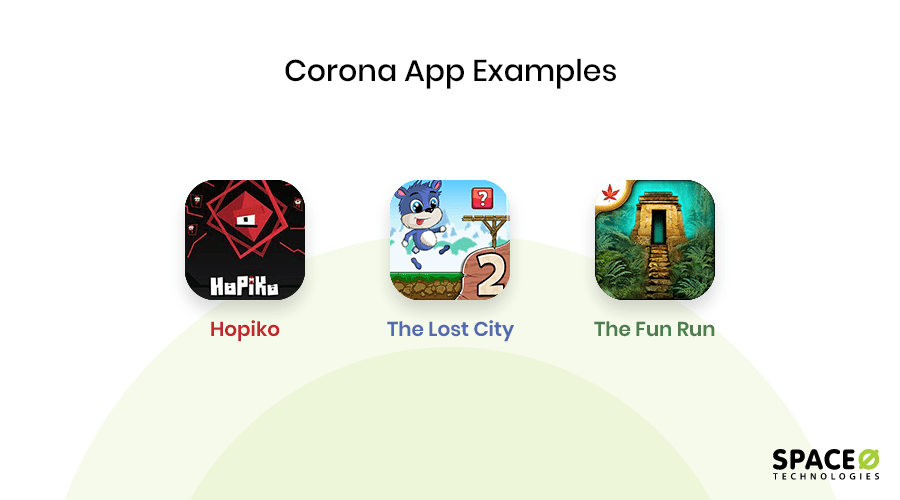
-
Appcelerator
Appcelerator Intro
Like other hybrid mobile app development frameworks, Appcelerator also allows developers to build apps for all mobile devices. It's based on Award-winning open source Titanium, a JavaScript-based SDK with over 5000 APIs for Android, iOS, Windows and HTML5. It handles the compatibility with the device and so you can focus on building quality apps.
If you're good at web development, you can quickly build fully native feature-rich mobile apps and leverage any native platform API.
Appcelerator allows you to reuse up to 90% of code if you are targeting multiple platforms. You can even extend its capabilities with hundreds of marketplace modules. Appcelerator also comes with cloud capacity limits and the options to on-premises and Virtual private deployment.
Appcelerator Features
- App Designer: Appcelerator comes with an app designer through which you can visually design and develop apps for Android, iOS, and other platforms. It supports drag-and-drop components which generate quality code following the best practices. Developers can even see the UI changes across the Operating systems and devices.
- Hyperloop: Appcelerator comes with something called Hyperloop that makes it possible to directly access and integrate every Android and iOS API using JavaScript. Developers can easily Incorporate third-party native libraries without any hassle. They are even allowed to run Java, Objective C, or Swift code alongside Titanium code.
- API Builder: Appcelerator comes with a lot of useful features for API management. You can assemble APIs, models and connectors to access data with exceptional speed. It allows you to combine and n
Check out the top mobile apps that are developed on the Appcelerator framework:
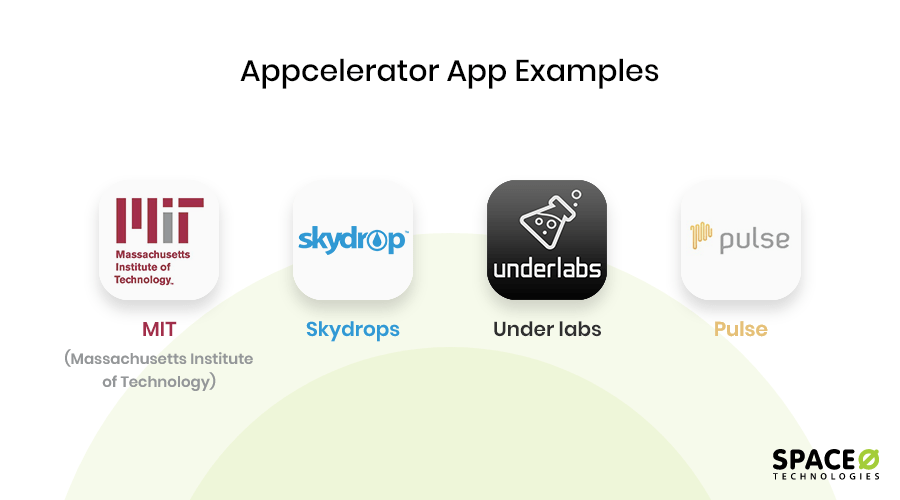
-
NativeScript
NativeScript Intro
NativeScript is an open source framework for building truly native mobile apps with Angular, Vue.js, TypeScript or JavaScript . It's completely free and available under the Apache 2 license.
You just have to use your web skills to write and deploy awesome mobile apps for Android and iOS from a single codebase. NativeScript is preferred by developers who want mobile app development for multiple platforms in less time and cost.
NativeScript Features
- Cross Platform: NativeScript allows you to create apps for the Android and iOS platform using a single codebase. Developers can also use Angular or Vue to share the existing code.
- Extensible: With NativeScript, Developers can directly access all the Android and iOS's APIs. They can use Android SDKs, CocoaPods along with the free templates, plugins and samples available on the Marketplace.
- Strong Backing: NativeScript is backed by Progress (NASDAQ: PRGS) having decades of experience in providing software for developers. So, whatever issue you will face, a robust support system is there to help you.
Have a look at the mobile apps built with NativeScript framework:
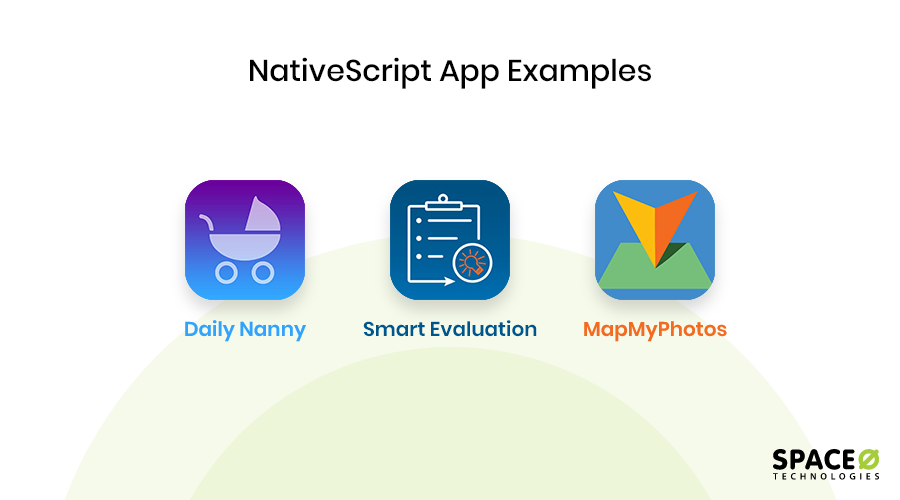
-
Mobile Angular UI
Mobile Angular Intro
Mobile Angular UI is a mobile UI framework that combines the implementation of the Bootstrap and Angular framework. It simplifies the mobile app development process so that you can build the apps using HTML5.
If you know already know AngularJS and Twitter Bootstrap, you won't face any difficulty in using this framework. Mobile Angular UI is available under MIT License and so you are free to use it in your projects.
Mobile Angular Features
- LightWeight: It doesn't require you to add jQuery dependencies or bootstrap js or any other heavy dependencies. Just use a few angular.js directives and you're good to go.
- Beautiful Mobile Components: Mobile Angular UI comes with all the awesome mobile components missing in Bootstrap 3: sidebars, scrollable areas, overlays, switches, etc. It relies on popular JavaScript libraries like overthrow.js and fastclick.js to provide a better mobile experience.
- Move from Desktop to Mobile or vice versa with smallest efforts: Mobile Angular UI retains most of the Bootstrap 3 syntax. This makes it quite easy to convert an existing desktop or web app to mobile.
You will also get a small CSS file to do the opposite. You just have to include it in your project and you'll find the responsive touch-enabled interface is ready for you.
Here's the list of mobile apps that are developed on the Mobile Angular framework:
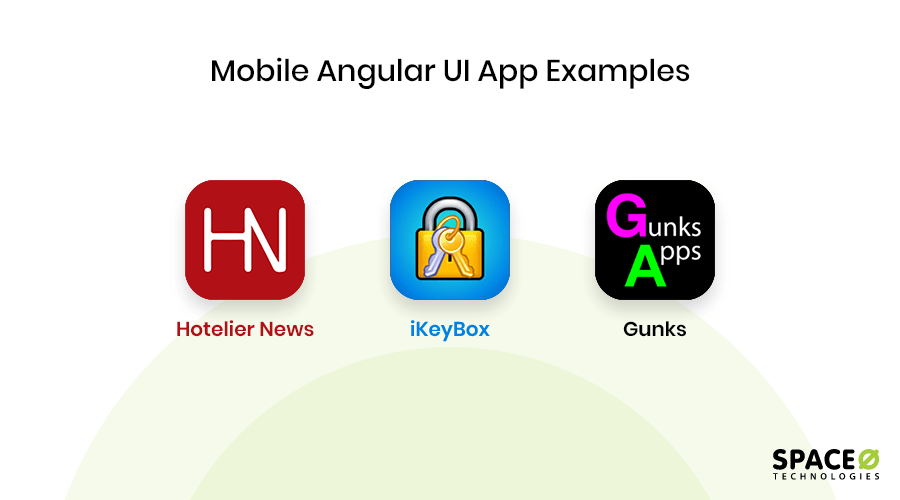
Let's discuss most asked questions that generally readers have in their mind.
Frequently Asked Questions
How much it costs to build an app?
Mobile app development costs $5000+ based on your requirements. It would also depend on the features, functionalities of the app, location of the app developers, complexity of the app, and type of the app.
How much time does it take to build an app?
It could range from 2 months to 6 months to build an app. These would also be based on your app requirements, such as complexity, features, and the number of screens.
Which are the best mobile app development frameworks?
- React Native
- Ionic Framework
- Flutter
Wrapping Up
The choice of a framework depends on the requirements and many other factors. They are the most important driving tools for the development of any application whether it is healthcare technology solutions, online food delivery solutions, or taxi apps like Uber.
No doubt, the upcoming years will see the emergence of many app developments and front-end development frameworks but the above mobile app development frameworks will remain the priority of developers. So, if you are planning to build an application using fewer resources and time, first know your requirements and consult us we are experienced in professional mobile app development services. In fact, we have already developed over 3500 mobile applications on both Android and iOS. If you are ready to commence your mobile app development project, we are just a click away!
Want to Validate Your App Idea?
We have designed and developed successful on-demand apps.
Have an App Idea
Want to discuss your mobile app idea? Want to get a free consultation?

Jigar Mistry
Designation: Vice President (Technologies)
Jigar Mistry is Vice President (Technologies) at Space-O Technologies. He has 14+ years of experience in the web and mobile app development industry. He has expertise in different mobile app categories like health and fitness, eCommerce, and on-demand.
Intel Xdk App Designer Missing
Source: https://www.spaceotechnologies.com/top-mobile-app-development-frameworks/
Posted by: neeleyhaddide.blogspot.com

0 Response to "Intel Xdk App Designer Missing"
Post a Comment